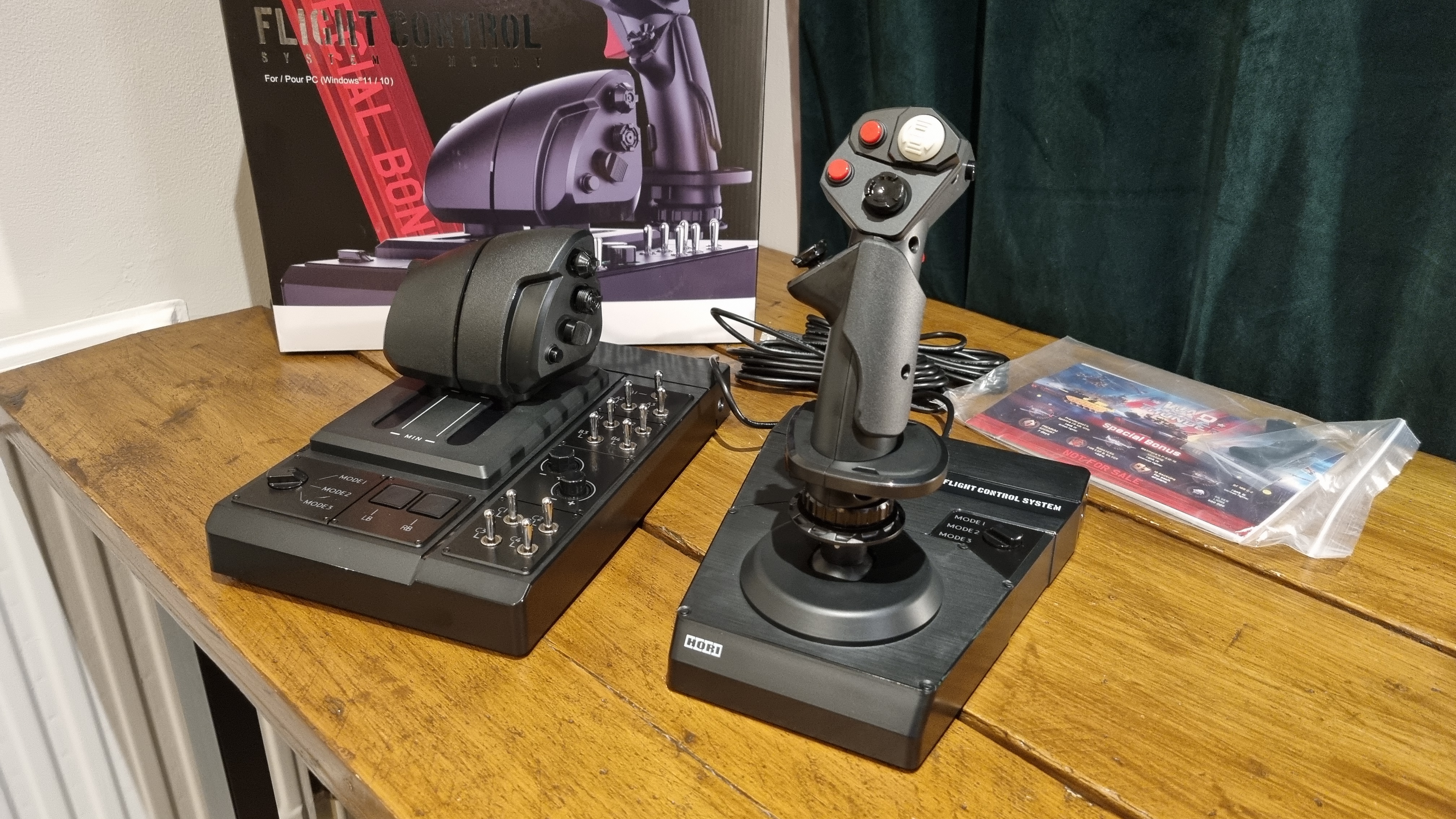Our Verdict
An odd choice in materials and crunchy plastics makes this HOTAS system much less pleasant than it first appears
For
- Accurate inputs and plenty of control options
- Mounts are excellent
- Metal toggle switches on the throttle base are satisfyingly chunky
Against
- Cheap plastics and materials used in all the wrong places
- Gritty-feeling throttle control
- Doesn't feel like a high-end product, despite the high-end price
PC Gamer's got your back
When it comes to flight combat games, most enthusiasts would agree that a proper flight stick and throttle control system is the way to go, or what's referred to as a "HOTAS" system. That stands for "hands on throttle-and-stick" and gives you the classic layout of a flight stick in one hand for directional inputs, and a throttle system in the other, usually with a lot of programable toggle switches, buttons and doo-dads to set up for all your extra functions.
The Hori HOTAS flight control system proudly announces that not only does it deliver a comprehensive selection of these controls, complete with Hall effect sensors for accuracy, a twin-stage throttle and metal toggle switches, but it's also been developed in partnership with Gaijin Entertainment.
That's the developer of the massively popular vehicular combat multiplayer game War Thunder, and chances are you might have heard of it. Though perhaps for the wrong reasons. While the game itself offers you a huge number of planes to fly, tanks to drive and air combat mayhem to enjoy, it's also hit the headlines for the tendency of some members of its community to leak classified documents of military hardware on its forums, which is probably not the sort of attention the devs intended.
Still, as the saying goes, there's no such thing as bad publicity, and chances are if you've messed around with War Thunder's planes as a result of all the hoo-hah and had fun you might be thinking about looking for a flight control system to add to the experience, and given the tie-in branding, you may well end up here.
So what do you get if you pay the rather steep entry fee of $500/£450 for the Hori HOTAS system?
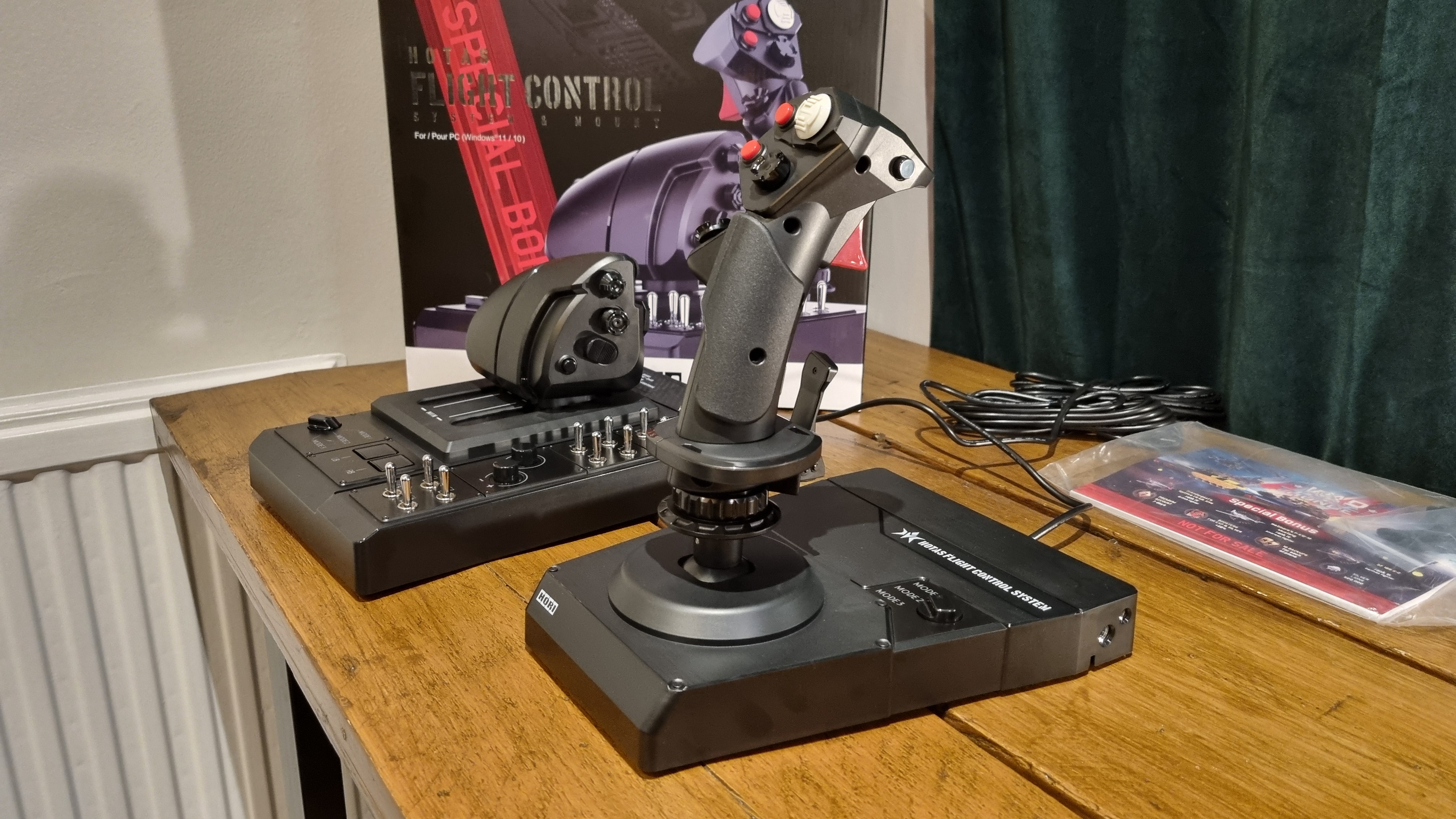
Type: HOTAS flight stick and twin-throttle control system
Connectivity: USB Type-A
Controls: Twin throttles with adjustable resistance and rudder paddles, Hall-effect sensor flight stick with dual-stage trigger, metal toggle switches, 61 button functions, selectable yaw control
Extra features: Included desk mounts for both flight stick and throttle control, War Thunder promotional code
Price: $500 | £450
Well, on initial viewing, quite a lot. You get the aforementioned flight stick with magnetic Hall-effect sensors and a dual-stage trigger, the twin-stage throttle system with built-in rudder paddles, 61 button functions, multiple dials, hat switches and extra paddles alongside some lovely looking metal toggle switches, some very chunky and robust looking desk mounts, and a coupon code for War Thunder that gets you three limited-edition fighter planes and a substantial amount of in-game currency to spend. Phew.
This really is aiming to be the full package every War Thunder or flight-sim enthusiast would want to up their game, and it certainly seems to be ticking all the right boxes. That is, unfortunately, until you put your hands on the controls themselves.
There's a really odd selection of plastics used here, and it's confusing. The materials on the base of the flight stick and throttle are chunky, tactile, and feel good underneath your fingers, as does the plastic on top of the throttle control itself and some of the switch gear. Other materials feel exceptionally cheap, and some of them are in places where you're going to find your hands most often.
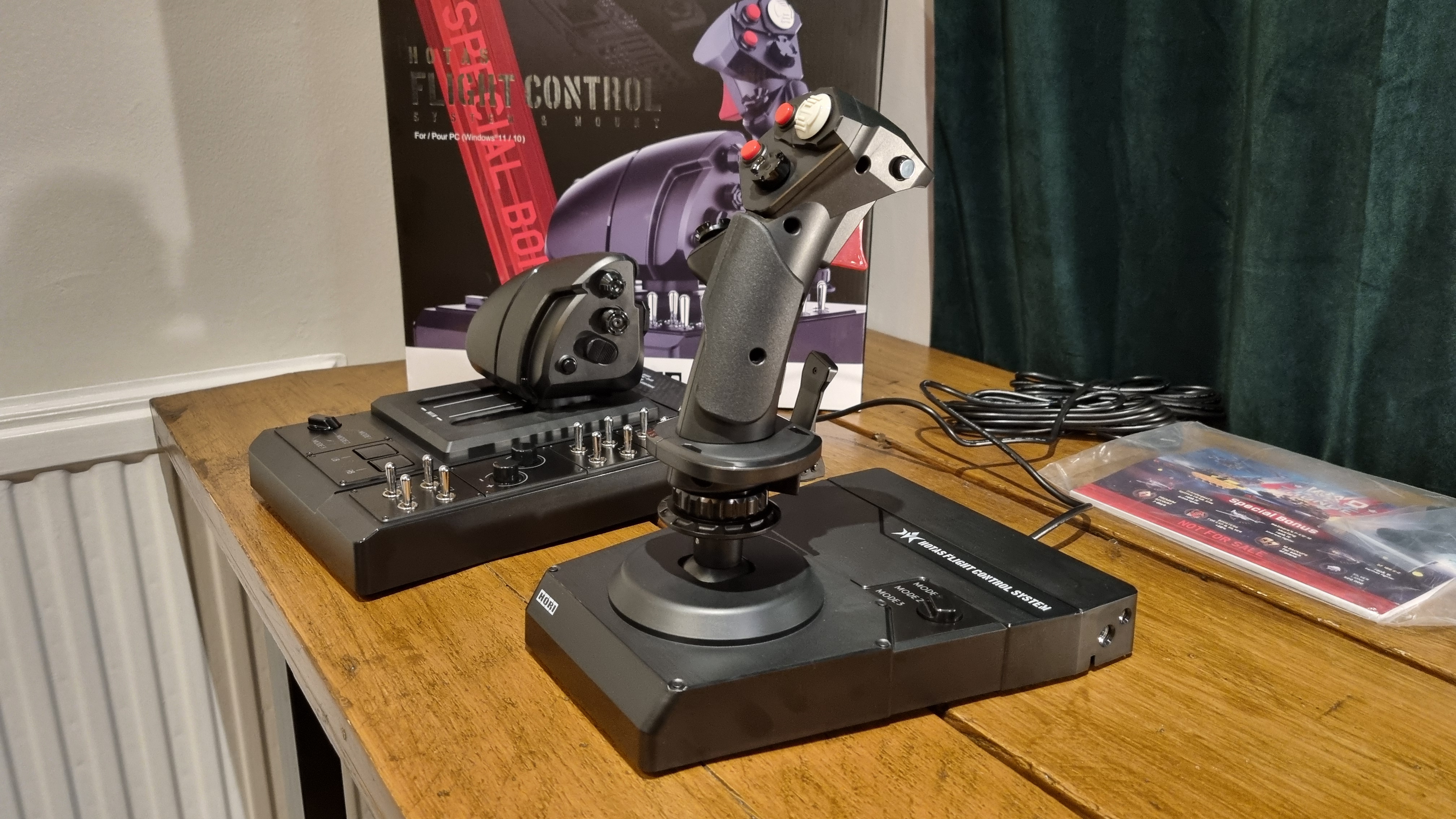
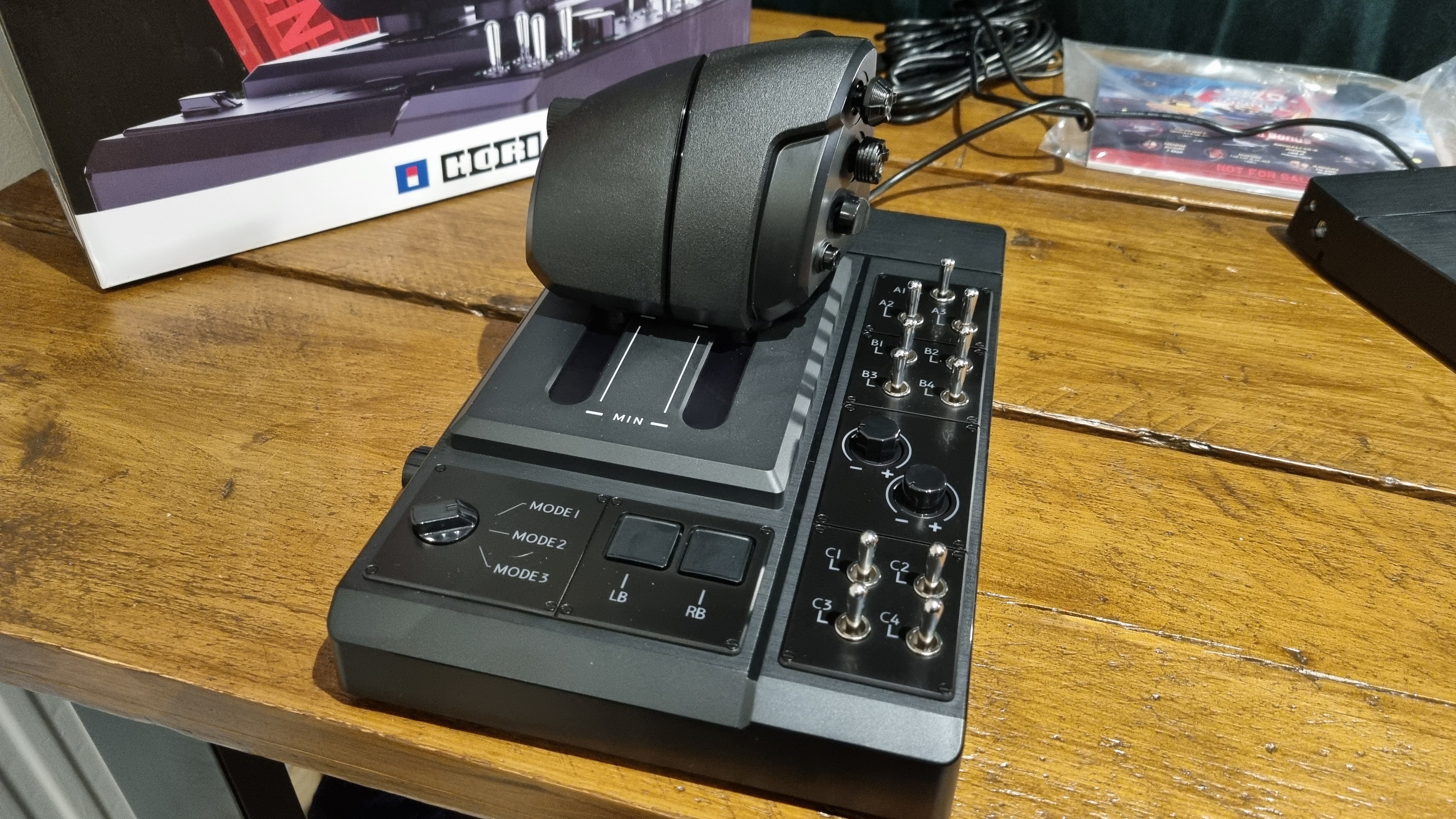
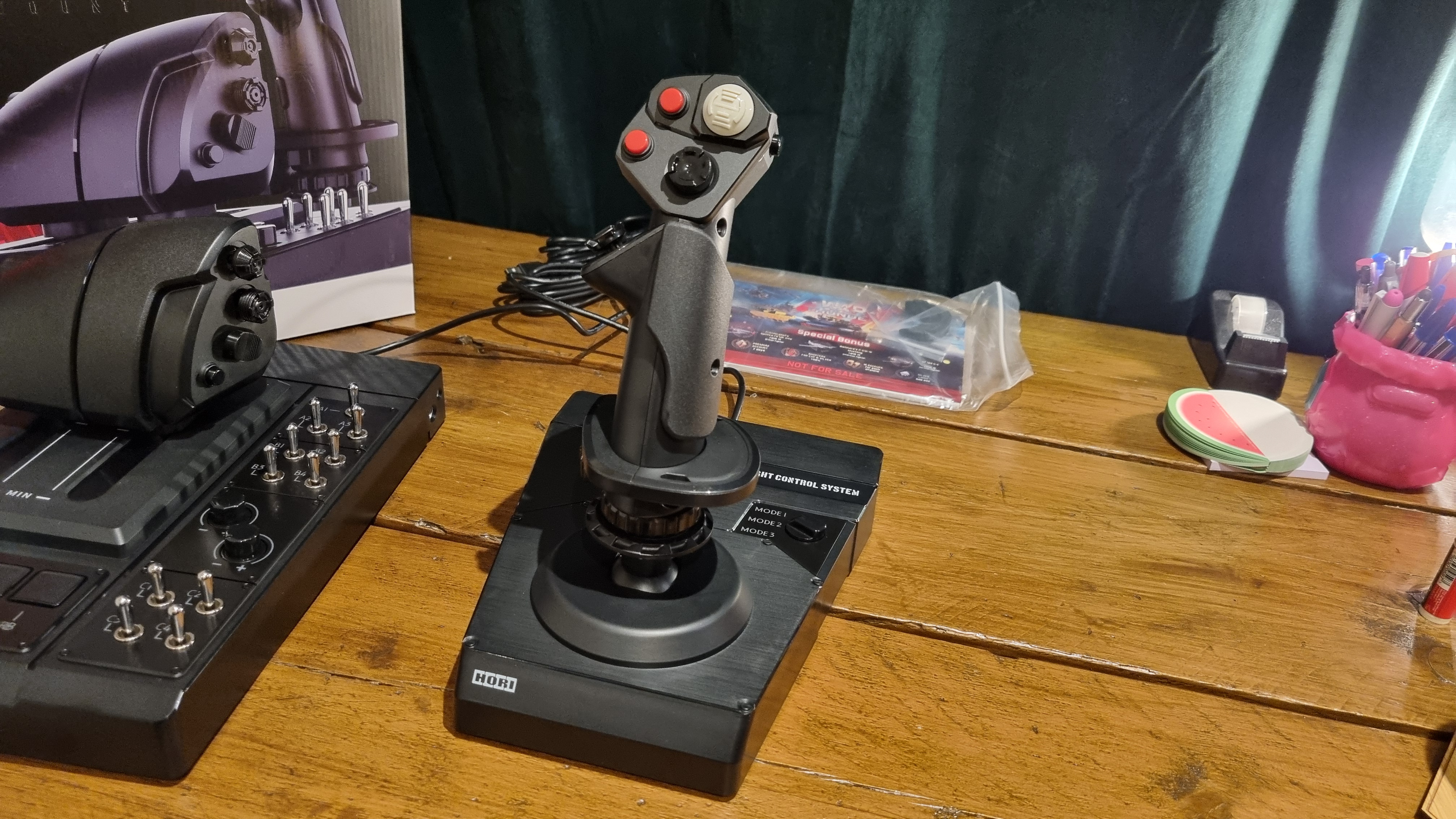
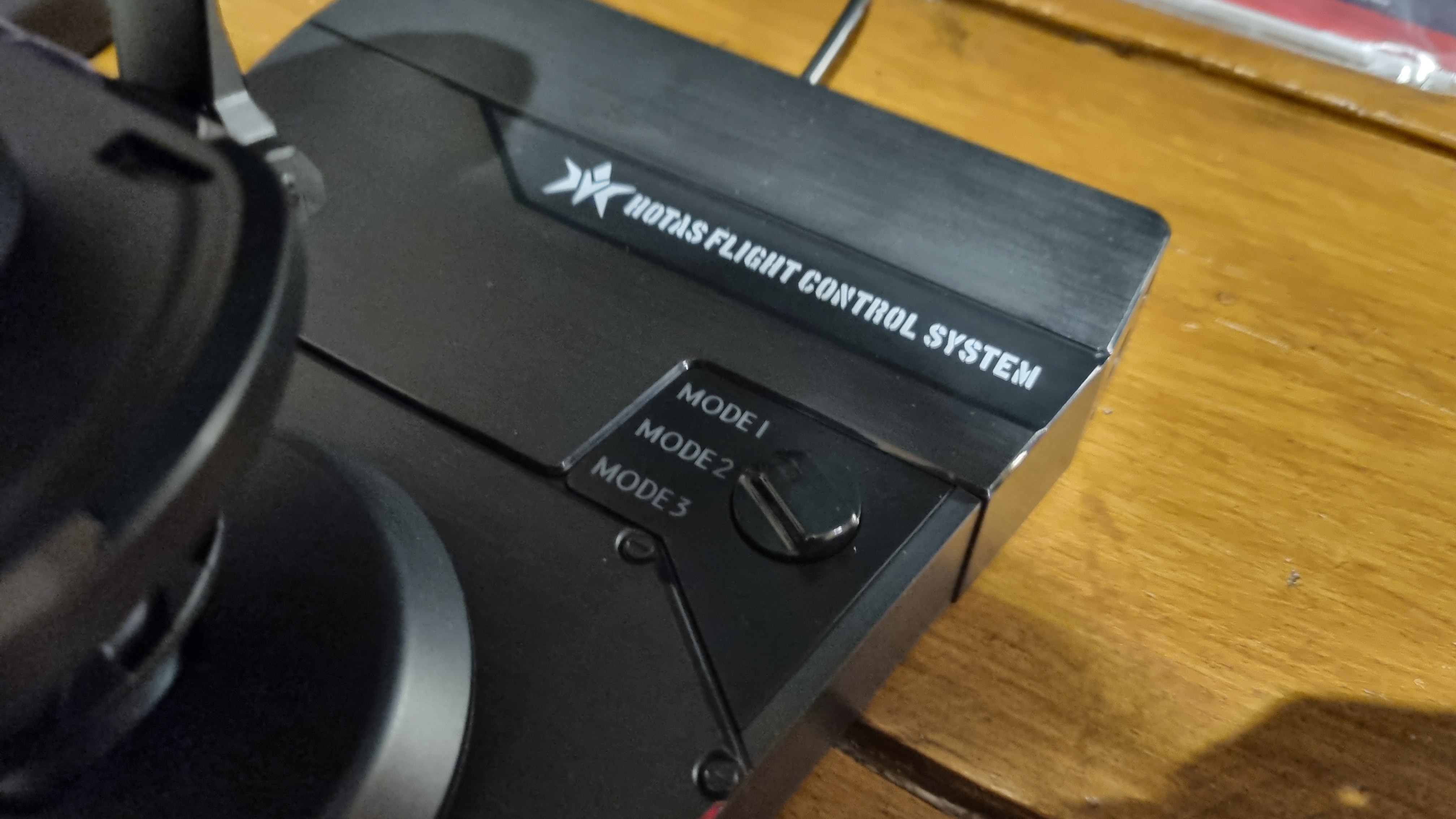
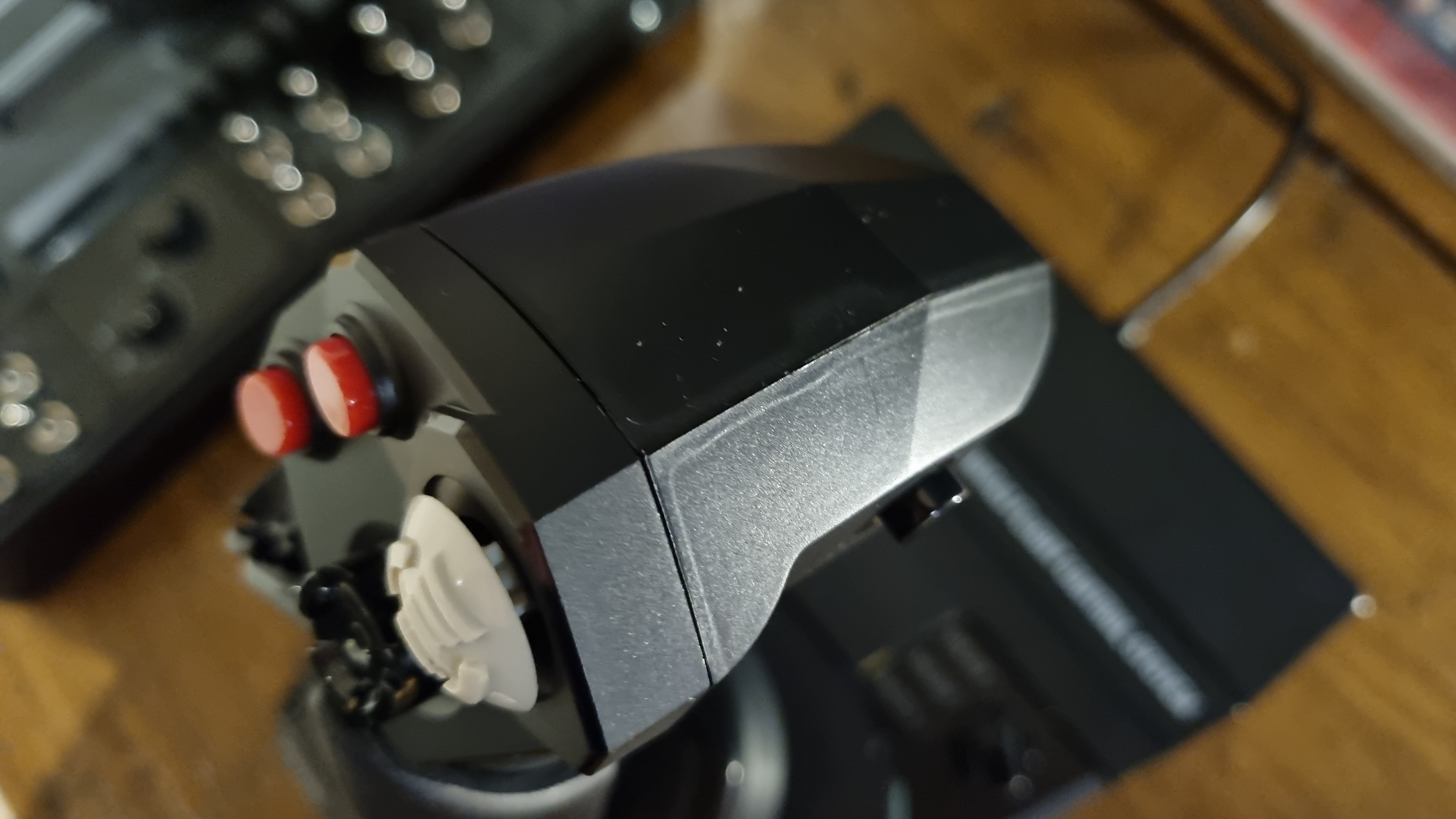
The top of the flight stick feels horribly plasticky and hollow, with a distinct visual seam that suggests it's just as thin as it feels. Some of the buttons directly underneath your fingertips feel positive and well-designed, while others feel again, hollow, rattly, and cheap. There's a grey-white plastic hat switch designed to be activated by your thumb that is not only made of some very cheap-feeling plastic with rough moulding edges, but also rattles around like it's barely attached.
I've used hat switches like this before that have a fair amount of play in the mechanism before you rest your thumb on them, but this feels absurd, loose to a fault, and unintentional.
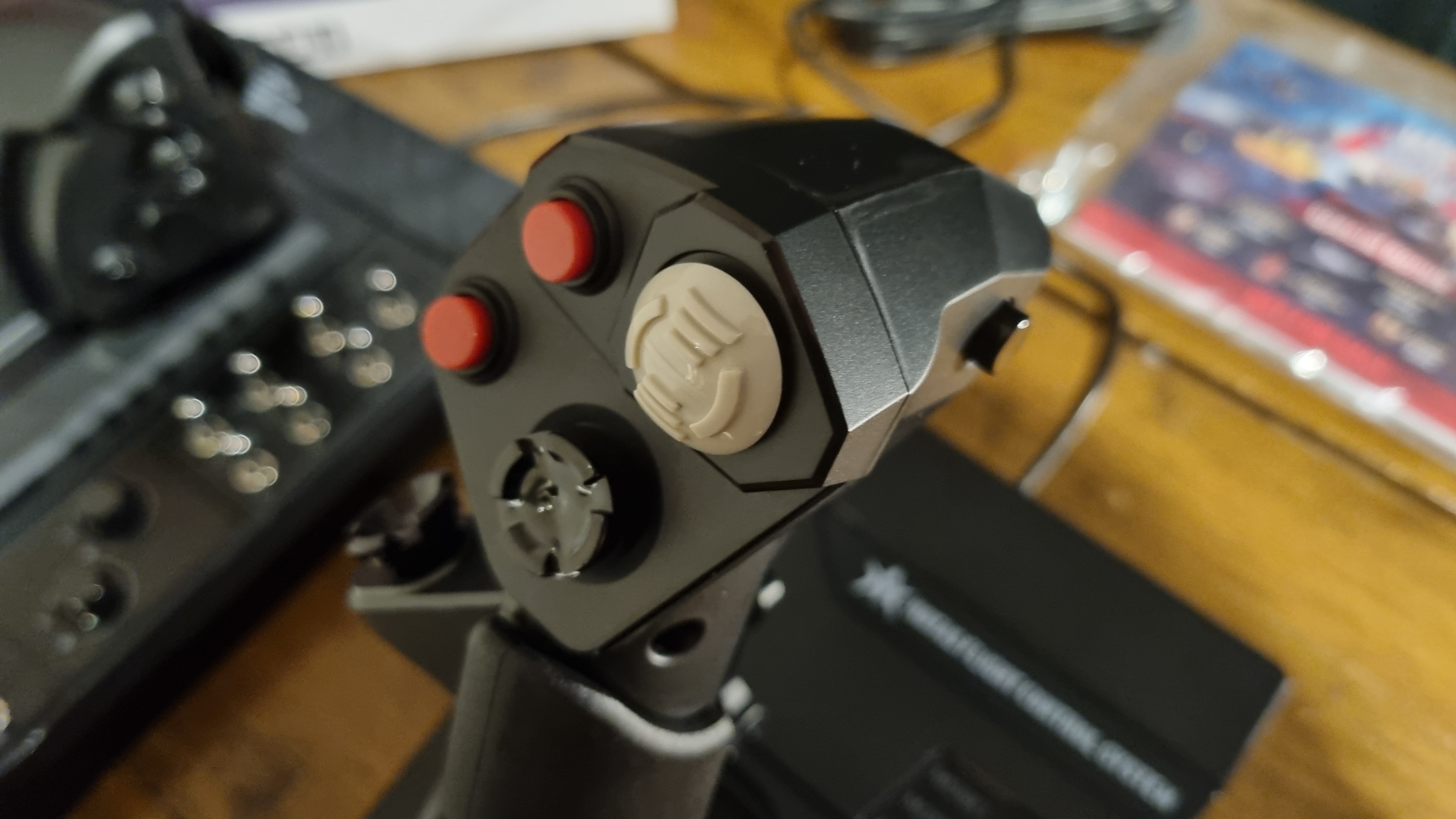
You spend your initial time with the Hori HOTAS bouncing between moments of genuine delight (those metal toggle switches on the throttle base are absolutely fabulous to activate, and feel like they come from a different product entirely) and wrinkling your nose. For every control that feels well made, positive and satisfyingly chunky, there's another that feels like it was made for a cheap children's toy, not a simulation interface.
I could go on for some time, but here's a run down of some highs and lows. The paddle-operated button on the flight stick feels lovely and dampened, as do the rudder axis paddles on the throttle controls. The clickable "action button" on the stick underneath your grip, however, rattles around and needs significant support from the underside of your fingers to feel like its positively attached. The four-way hat switch on the side of the stick feels positive and clicky, whereas the one on the top feels slightly loose and vague. The dual-stage trigger you're likely to assign to your guns feels smooth and satisfying, while the buttons that you'd use for missiles and counter-armaments are bitty, rattly, and again, hollow.
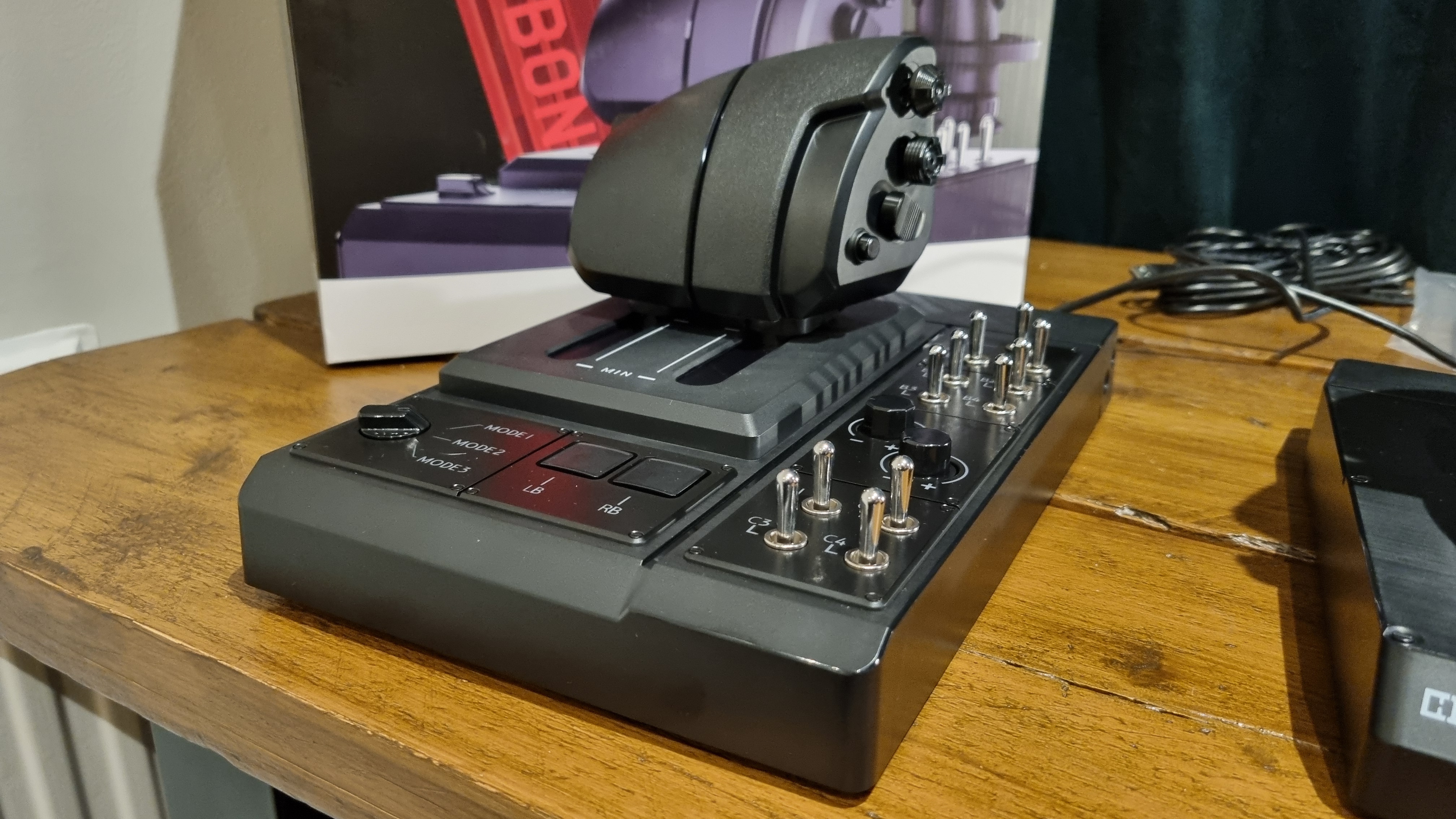
My biggest bugbear, however, has to be reserved for the throttle movement itself. This is a crucial control to get right, as if you're playing an air combat game you're likely to be adjusting the power regularly. This should be a satisfying, smooth and pleasurable experience, the direct interface between you and the power of your virtual machine.
It's not. You can adjust the tension of the mechanism underneath via a dial on the side of the base, but really it makes little difference whether you set it to a heavy feel or light. It graunches underneath your movements, with the distinct feel (and sound) of cheap plastic rubbing against cheap plastic. There's a slightly grainy feel to the movement, a grinding sensation that comes right up through your palm that made something tickle in the back of my throat every time I used it.
✅ You want a lot of functionality: The HOTAS offers you a huge amount of customisation, with switches, toggles, hats, buttons and dials for days.
✅ You don't want to buy separate desk mounts: The Hori HOTAS comes with its very own, and jolly nice they are too.
❌ You're looking for a premium feel: While some of the switches, toggles and dials feel very chunky and well thought out, others are quite frankly poor, and that includes some of the ones you're going to want to use most often.
❌ You want a great throttle control: Functionality-wise, it's great. Feel-wise? Ugh.
❌ You're on a budget: Given the cheap feeling plastics, while you do get a lot of functionality for your money, I'd argue that you'd be better off with less controls, more attention to detail, and for less cash.
Software-wise, Hori device manager controls the show, and it's a utilitarian but functional interface that had no problem detecting both the flight stick and the throttle system and updating the firmware.
I tried out the Hori HOTAS first in War Thunder, and as expected from a flight control system developed in partnership with the devs it was detected immediately within the in-game drop down control interface and came with a default setup that was perfectly usable.
In-game I took to the skies, and it's here where the HOTAS performs reasonably well. I had to play around with the sensitivity and dead zones to get a configuration I liked, but this is a common setup process for any flight stick, and it wasn't long until I found myself feeling within reasonable control of my virtual machine, although given my ineptitude at War Thunder I still ended most matches cartwheeling merrily through the skies with the arse of my plane spewing smoke from multiple hits.
Still, the experience itself was fairly good, although in all honesty while the stick movement was smooth and accurate thanks to those Hall-effect sensors I can't say it felt particularly luxurious in the way you'd hope a premium flight control system might be. It felt fine, but given the pricing here, I'll be honest and say I hoped for something more.
Microsoft Flight Simulator and DCS World provided similar results although required heavier setup tweaking, however with a bit of fiddling the controls provided a wealth of options for configuration and good accuracy for the act of flying itself. Of note here is the sheer functionality of all those buttons and dials, as you can switch between 3 modes via a dial on the base of the flight stick for different button configurations, which is particularly useful for more complex sims like DCS and its glut of dizzying in-flight controls.
I noticed that when used on a desk the base units did start to slip around a little bit, although my desk is unhelpfully uneven, so I switched to the included mounts. This is a nice addition as part of the package, and both the stick and throttle mounts feel robust and reassuring. While the system can absolutely be used on a flat surface the mounts do make a world of difference, and were of a very good quality that refused to let the devices move around beyond their intended purpose.
They also allow you to have the controls at a lower and more realistic position than on your average desktop, so it did add something appreciable to the overall feel of flying a digital aircraft.
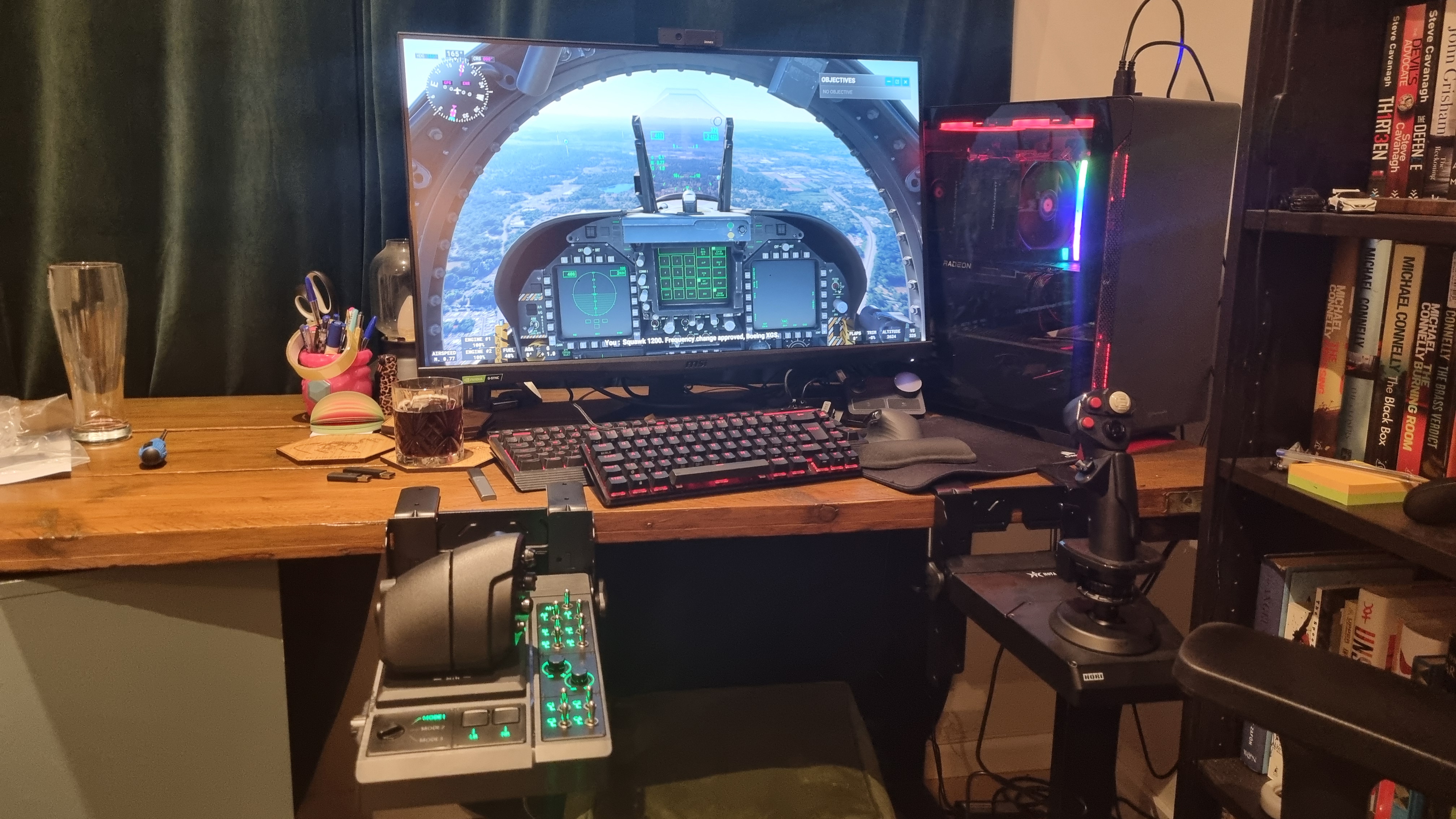
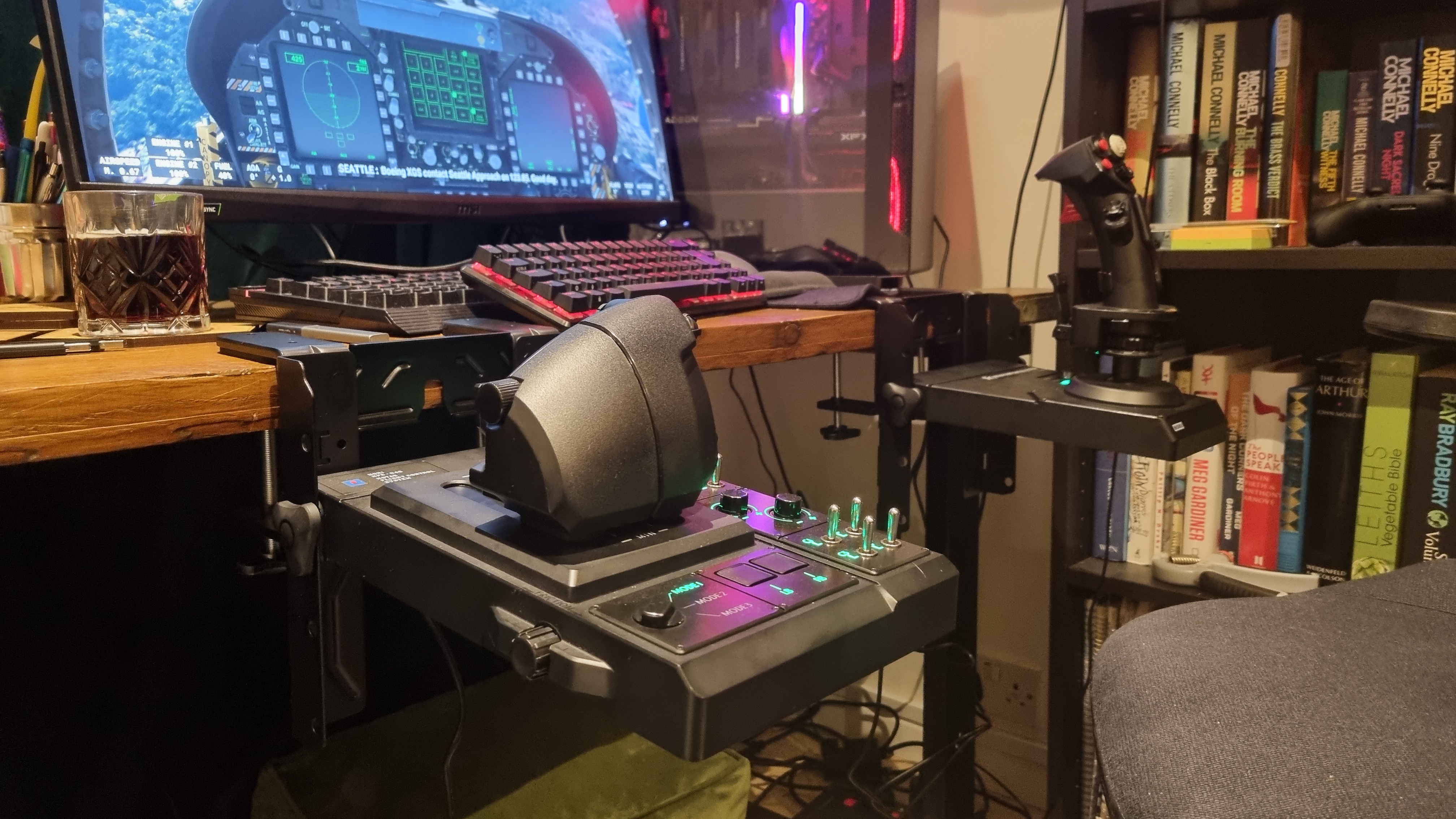
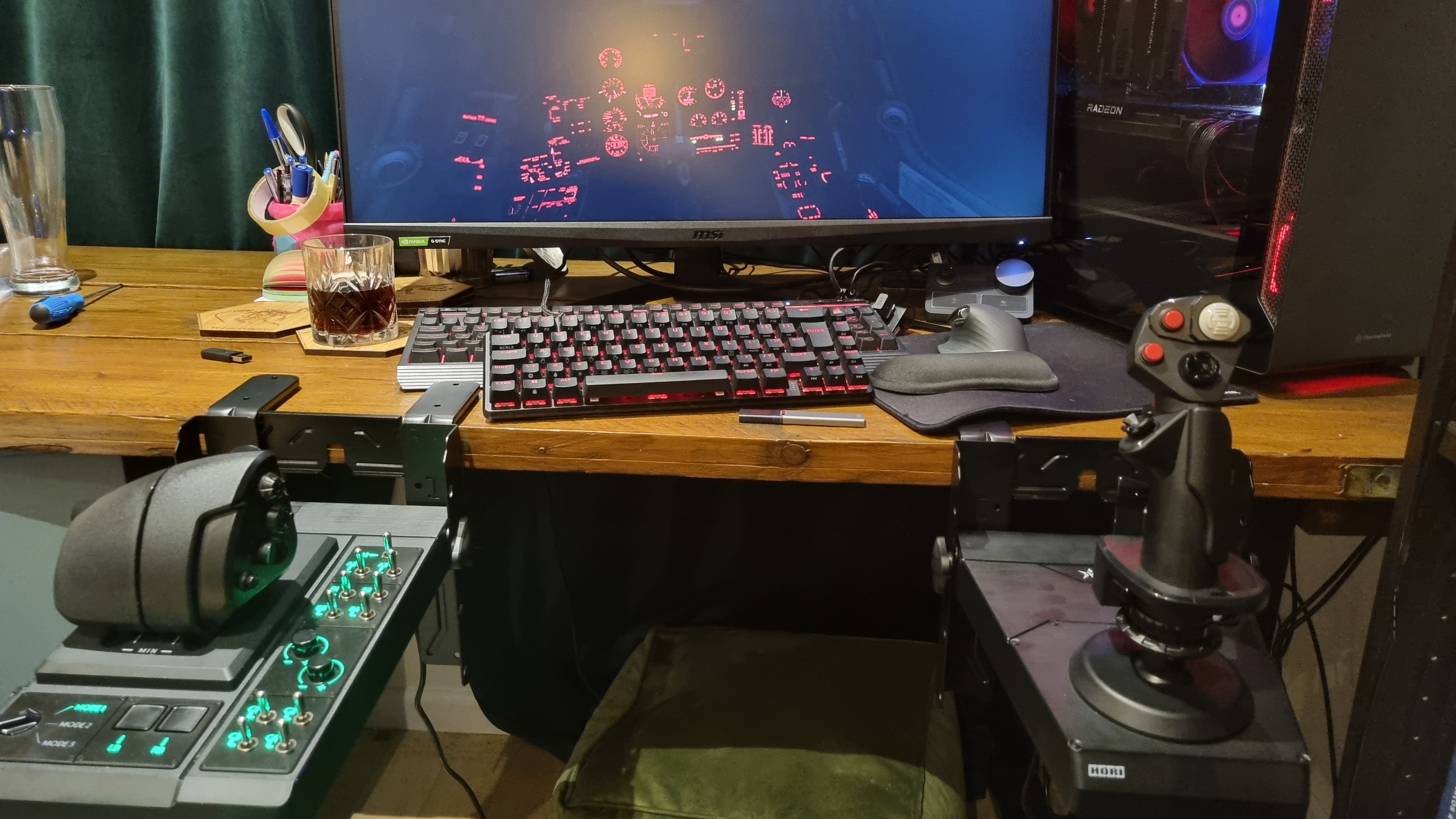
Still, while the mounts are excellent and the functionality is good, I still couldn't get past the tactile nature of the experience, or perhaps in this case, the lack of it. It might seem like a trivial thing to go after a device because the plastics are horrible in places, but honestly, this is a product that should be all about feel, particularly for this sort of money.
When I compare it to something like the beautifully-made Thrustmaster HOTAS Warthog that currently occupies the top spot in our round up of the best PC joysticks—and reckon with the fact that, despite feeling like it came straight out of the actual plane itself, it's often a whole $100/£100 cheaper than the Hori HOTAS—I can't find myself becoming too glowing over the addition of some nice mounts and some extra functionality.
While the Hori HOTAS has ticked most of the boxes for completionism in a flight package, the truth is that unless said flight package feels like a premium object, you're always going to be disappointed when you bring it out for a session. Getting your flight peripherals set up is often a bit of a hassle, so really what you want in a product like this is something desirable enough that it begs you to go through all that rigmarole, just to get that experience and feel.
And honestly, it's the experience and feel that lets it down. It just doesn't ring as a high-end product, despite that high-end price, and as a result is likely to be a bit of a let-down if your choose to spend your flight-sim cash here.
It aims to soar, but thanks to those cheap materials and that gritty throttle movement, the truth is it sends you crashing back to Earth at an alarming rate. And if you want my advice? Time to bail out, and look for a safe place to land elsewhere.
An odd choice in materials and crunchy plastics makes this HOTAS system much less pleasant than it first appears

Andy built his first gaming PC at the tender age of 12, when IDE cables were a thing and high resolution wasn't—and he hasn't stopped since. Now working as a hardware writer for PC Gamer, Andy's been jumping around the world attending product launches and trade shows, all the while reviewing every bit of PC hardware he can get his hands on. You name it, if it's interesting hardware he'll write words about it, with opinions and everything.
